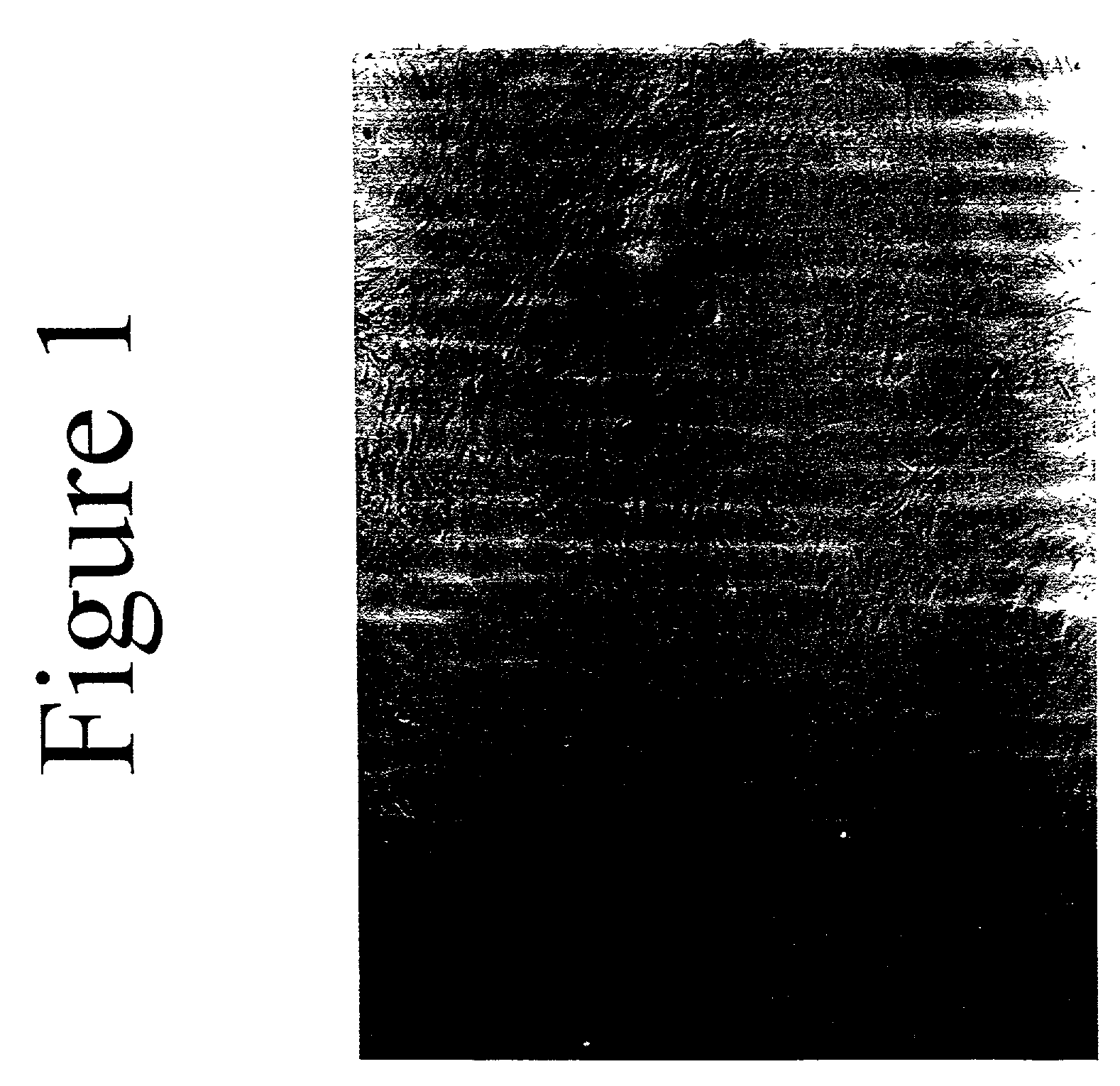Differentiation of adipose stromal cells into osteoblasts and uses thereof
- Summary
- Abstract
- Description
- Claims
- Application Information
AI Technical Summary
Benefits of technology
Problems solved by technology
Method used
Image
Examples
example i
Isolation of Stromal from Human Adipose Tissue
[0042]Human stromal cells were isolated from adipose tissue according to the procedures described by Rodbell (1964) J Biol Chem 239:375 and Hauner et al. (1989) J Clin Invest 84:1663–1670. Briefly, human adipose tissue from subcutaneous depots was removed by liposuction surgery. The adipose tissue was then transferred from the liposuction cup into a 500 ml sterile beaker and allowed to settle for about 10 minutes. Precipitated blood was removed by suction. A 125 ml volume (or less) of the tissue was transferred to a 250 ml centrifuge tube, and the tube was then filled with Krebs-Ringer Buffer. The tissue and buffer were allowed to settle for about three minutes or until a clear separation was achieved, and then the buffer was removed by aspiration. The tissue was washed with Krebs-Ringer Buffer an additional four to five times or until it was orange-yellow in color and the buffer was light tan in color.
[0043]The cells of the adipose tiss...
example 2
Differentiation of Extramedullary Adipose Stromal Cells into Osteoblasts
[0045]Adipose stromal cells were isolated as described in Example 1 and then treated as follows to induce differentiation into osteoblasts. Stromal cells were plated in 24-well and / or 6-well tissue culture plates in stromal cell medium (see above) at a density of about 22,000 cells / cm2. After 24 hours, the stromal cell medium was replaced with osteoblast differentiation medium (DMEM with 10% fetal bovine serum (v / v); 10 mM β-glycerophosphate; 50 μg / ml ascorbate-2-phosphate; 60 U / ml penicillin; 60 U / ml streptomycin; 15 μg / ml amphotericin B). The osteoblast differentiation medium was replaced with fresh medium every 3 days for 3 weeks. When changing the media, one ml of conditioned media was collected and stored at −80° C. for later analysis of secreted factors. Alternatively, stromal cells isolated from adipose tissue were induced to differentiate into adipocytes according to the method of Hauner et al. (1989 J C...
example 3
Identification of Compounds Affecting Osteoblast Differentiation
[0053]Cultures of stromal cells isolated from adipose tissue according to the method described in Example 1 were used to study the effect compounds of interest on osteoblast differentiation. Osteoblasts were differentiated from adipose stromal cells as in Example 2, but in the presence and absence of a compound of interest. Differentiation was measured by assays for secreted osteocalcin. Compounds found to positively affect osteoblast differentiation using the method of this example include bone morphogenetic protein 4 and osteopontin-I (data not shown). These results are in agreement with the previous findings of Wozney et al. 1988 Science 242:1528–1534; Asahina et al. 1996 Exp Cell Res 222:38–47; and Cook et al. 1996 Clin Orthop. 324:29–38. Compounds that enhance osteoblast differentiation may be used to enhance the bone structure of a subject, as discussed below.
PUM
 Login to View More
Login to View More Abstract
Description
Claims
Application Information
 Login to View More
Login to View More - R&D
- Intellectual Property
- Life Sciences
- Materials
- Tech Scout
- Unparalleled Data Quality
- Higher Quality Content
- 60% Fewer Hallucinations
Browse by: Latest US Patents, China's latest patents, Technical Efficacy Thesaurus, Application Domain, Technology Topic, Popular Technical Reports.
© 2025 PatSnap. All rights reserved.Legal|Privacy policy|Modern Slavery Act Transparency Statement|Sitemap|About US| Contact US: help@patsnap.com



